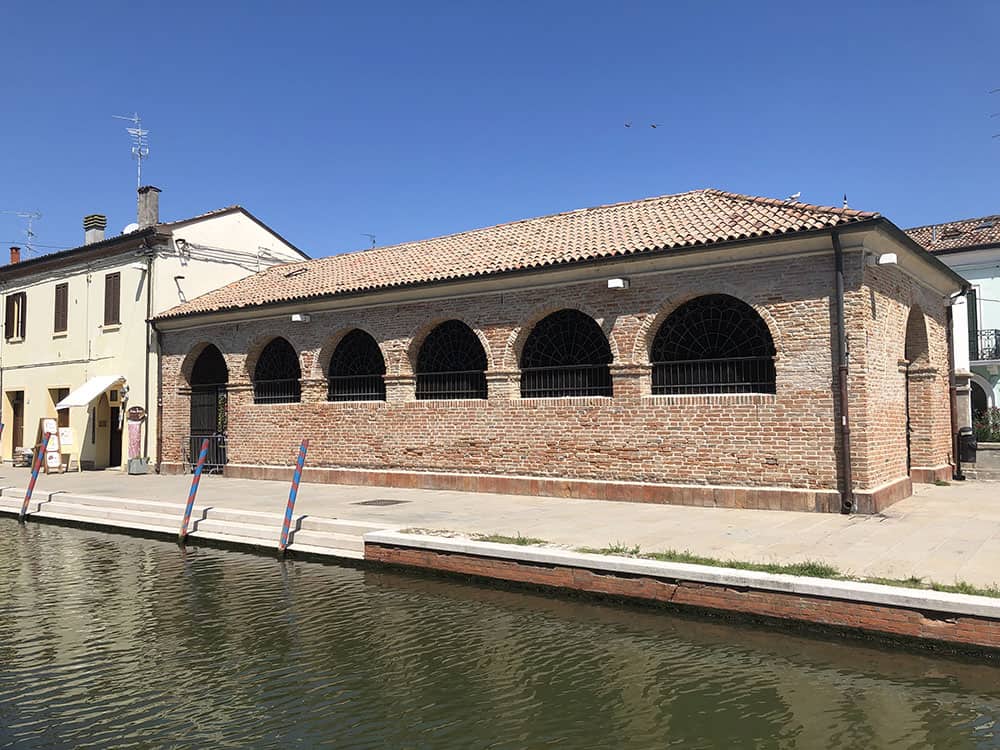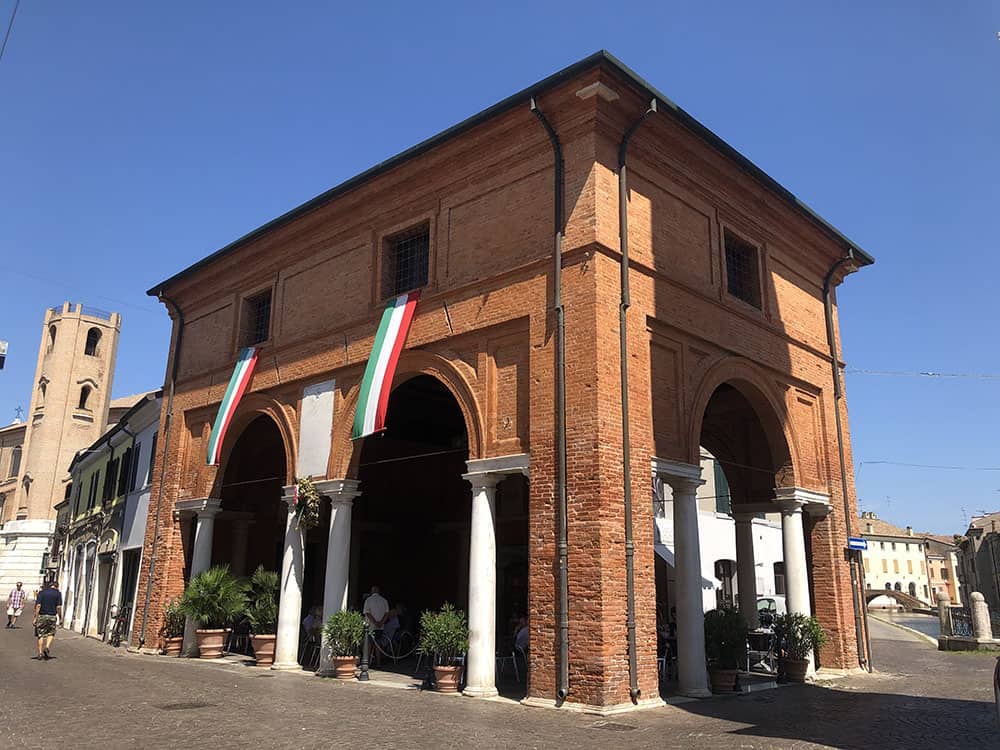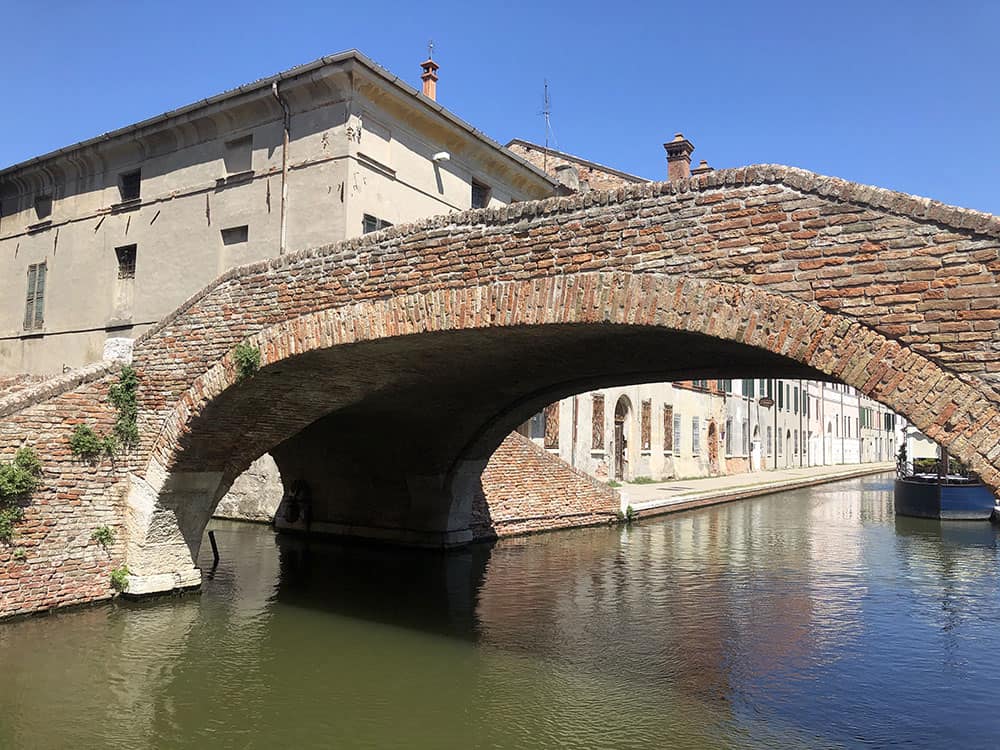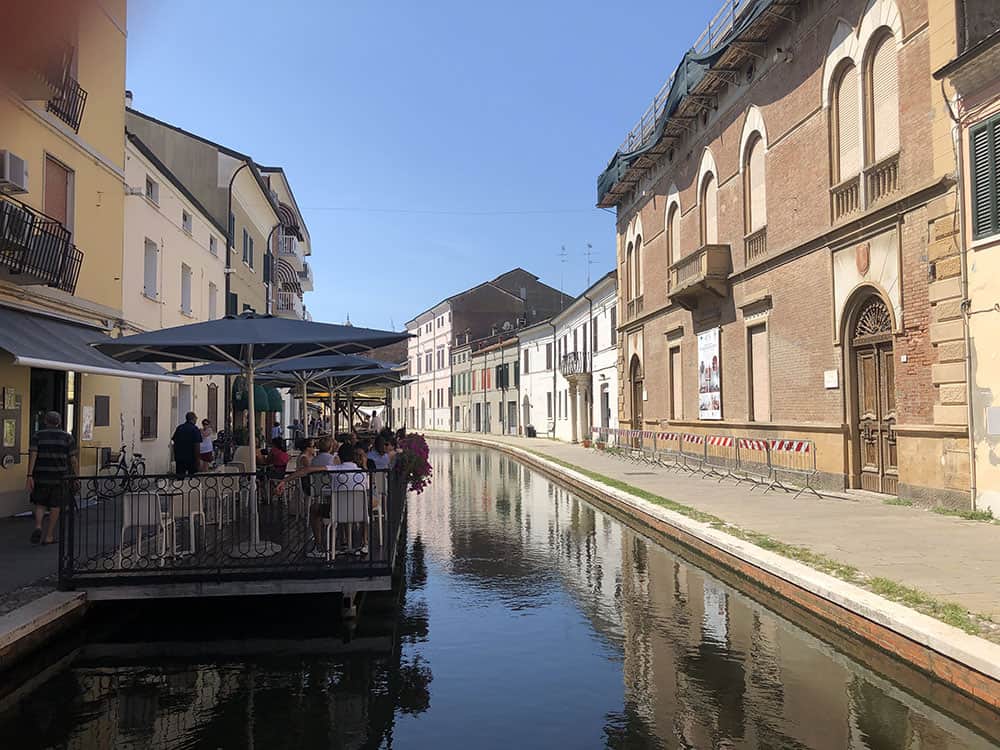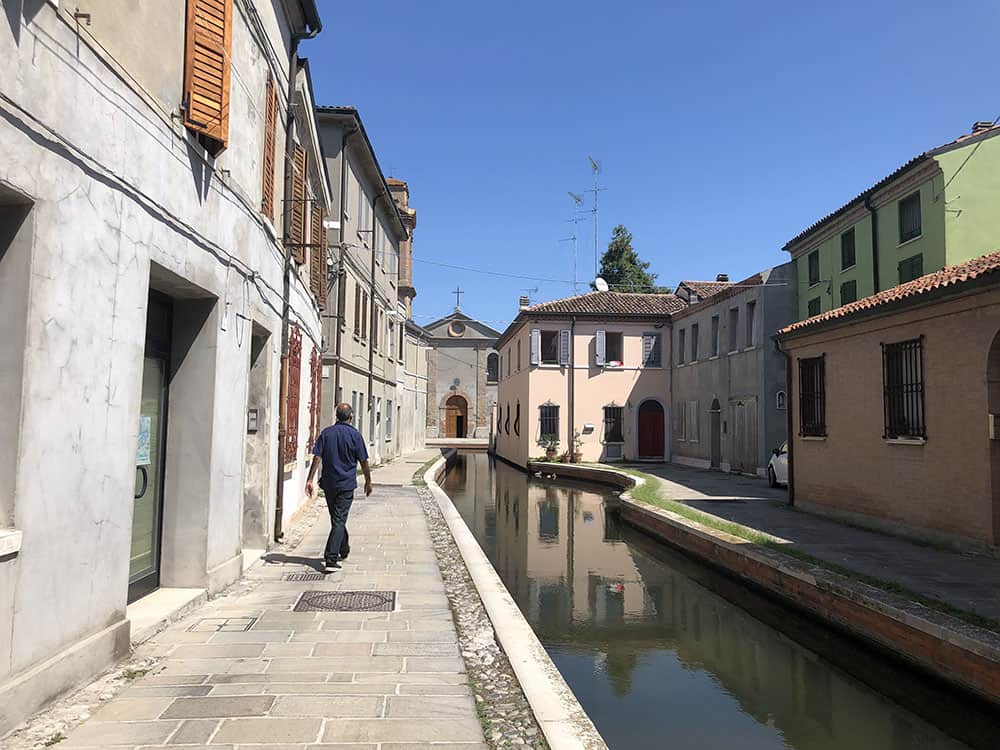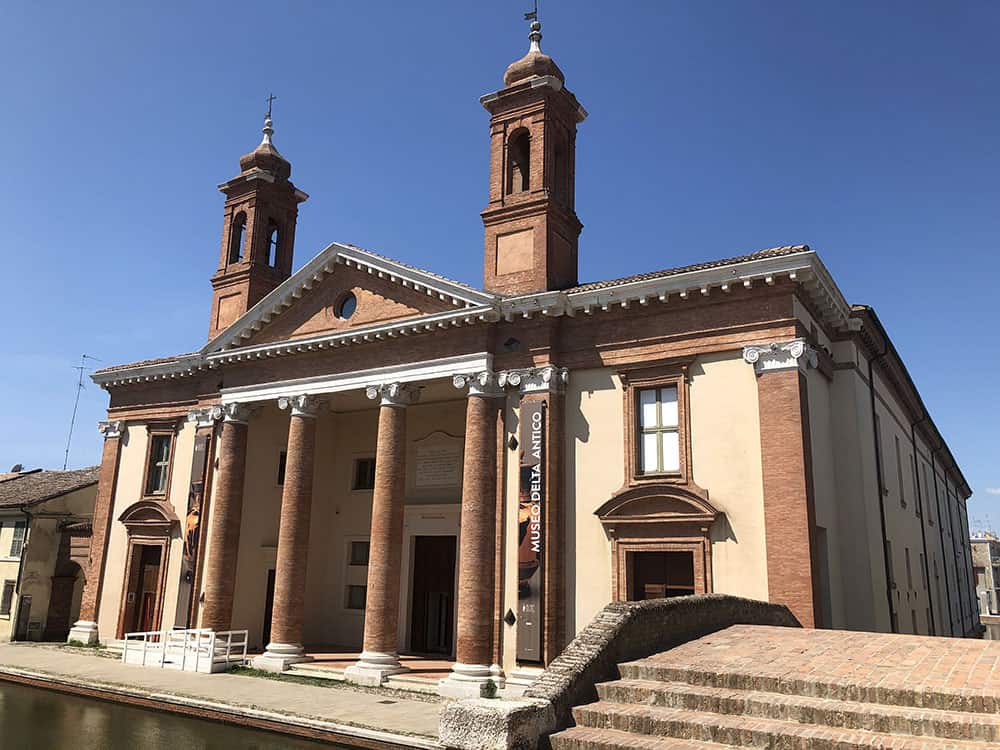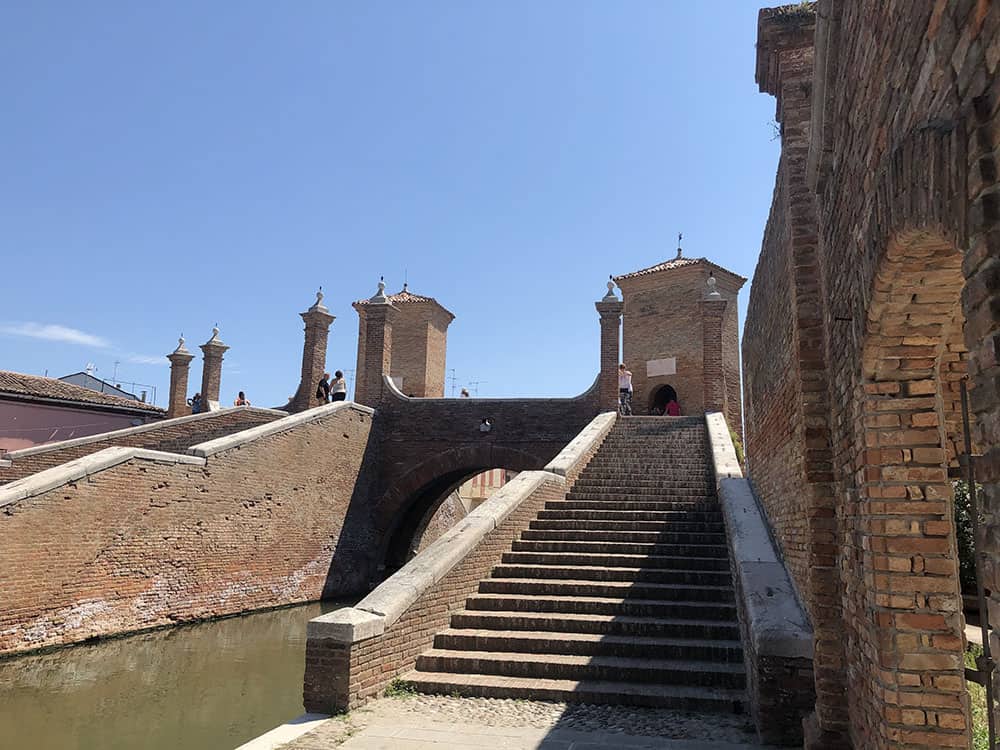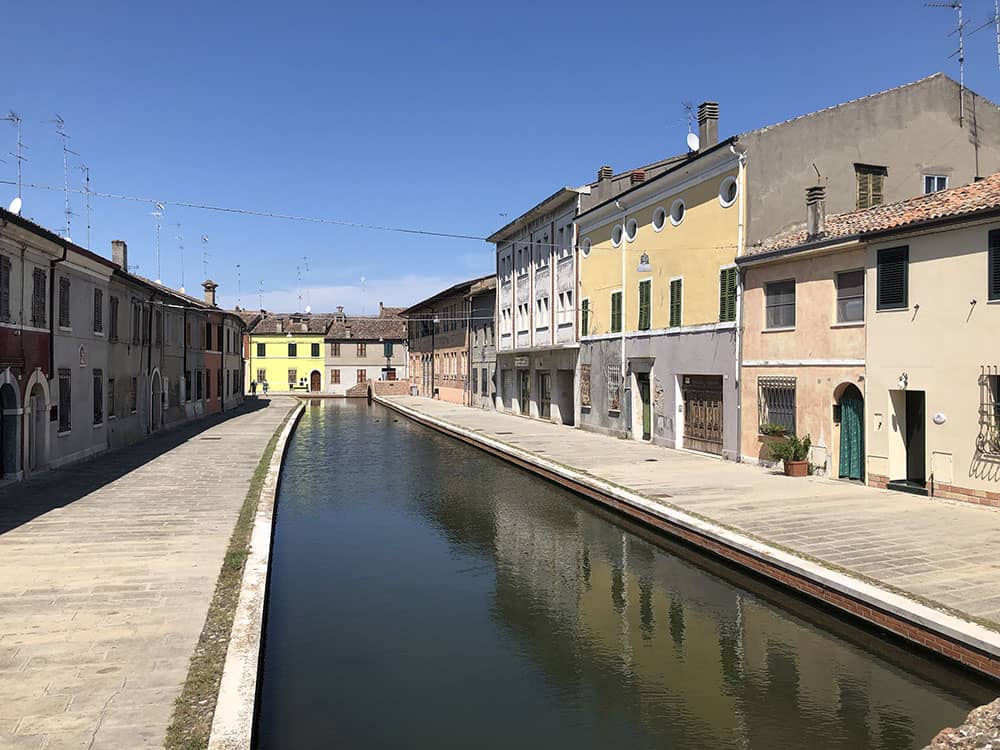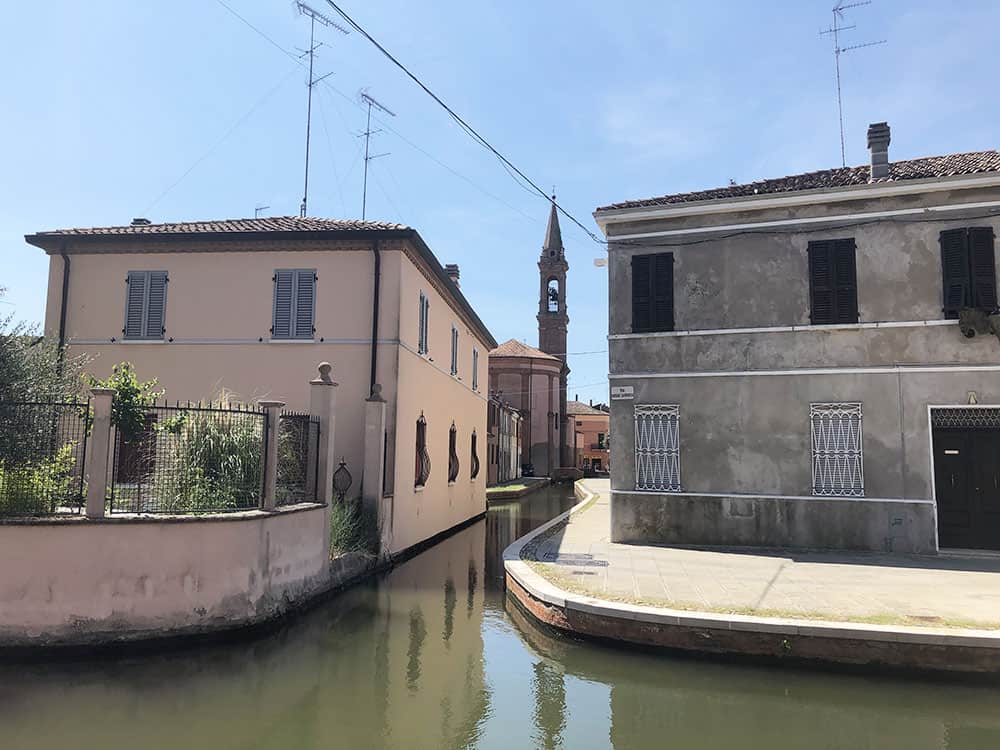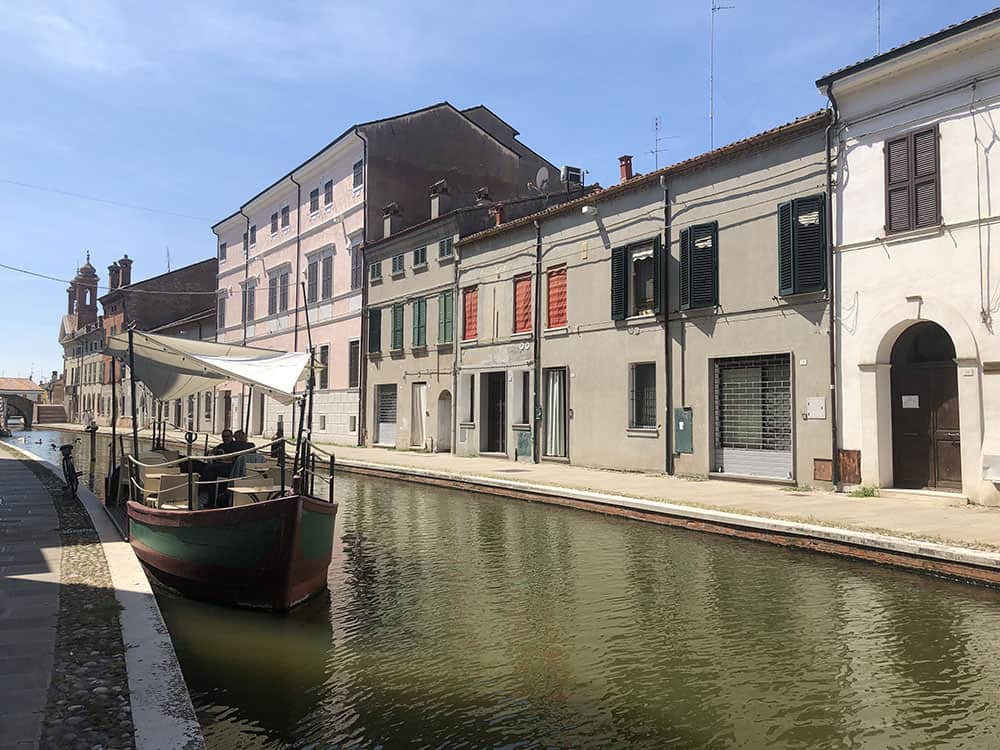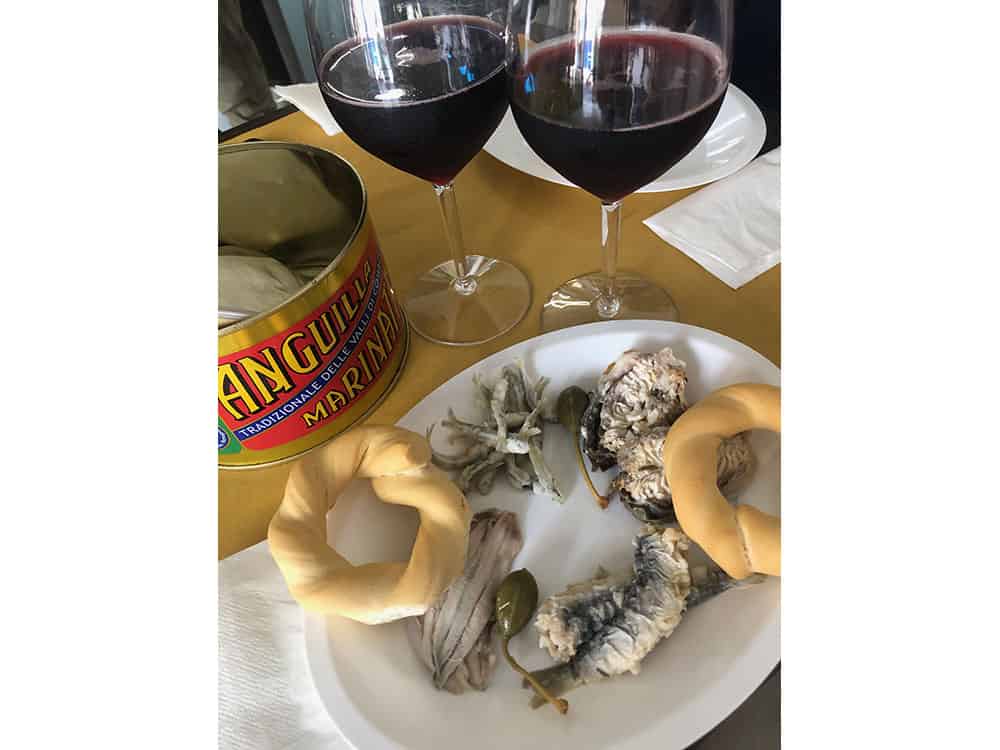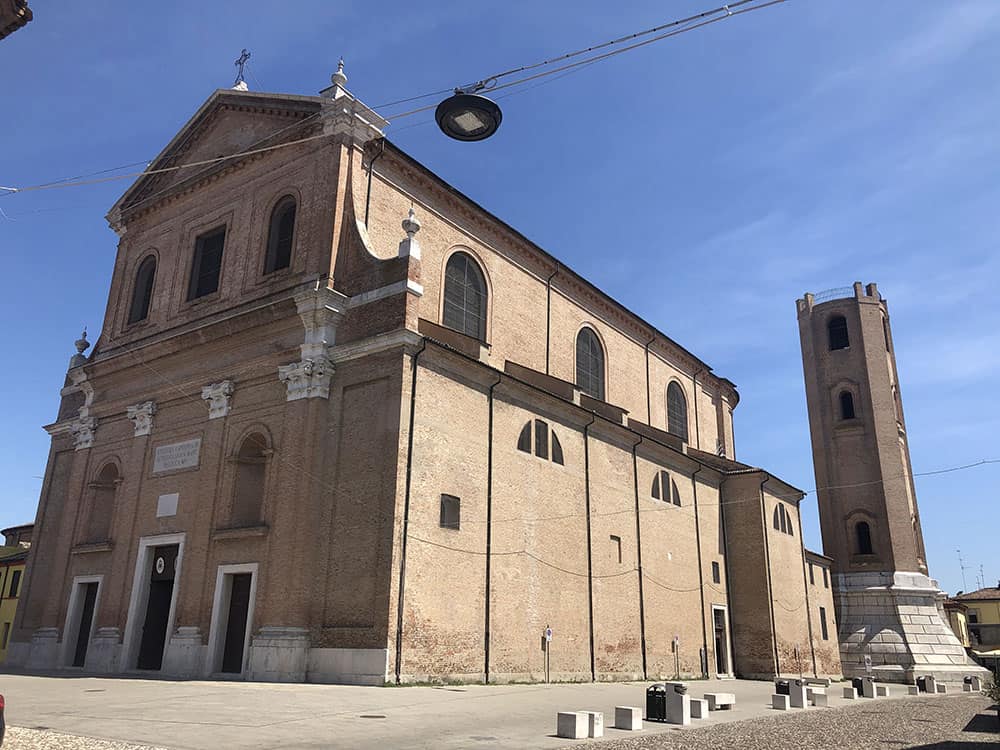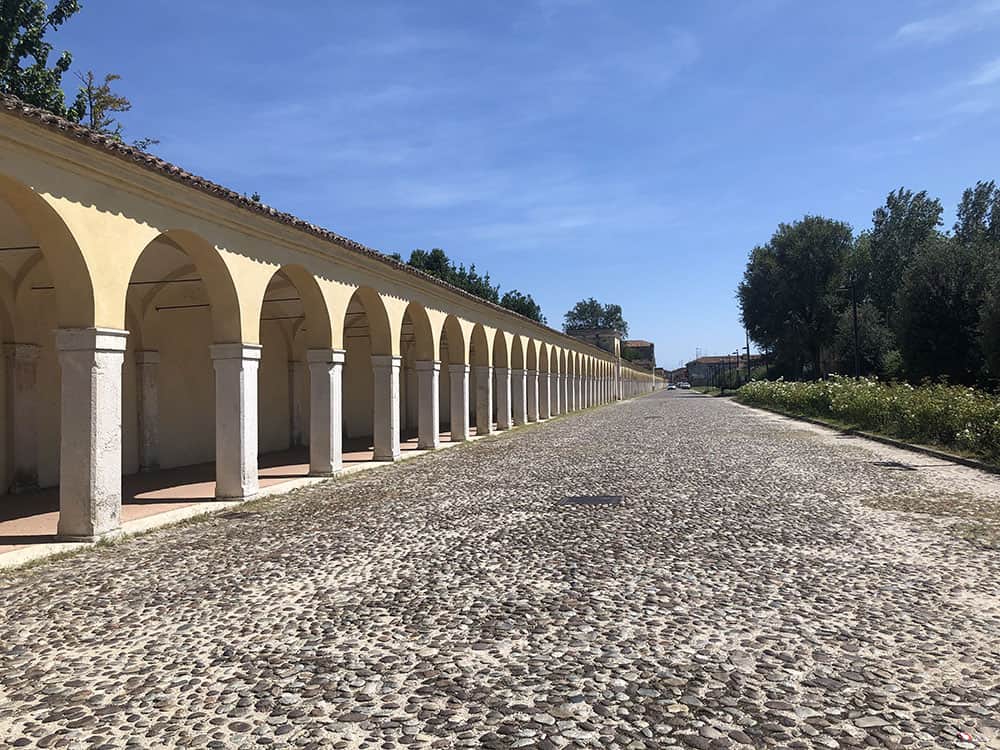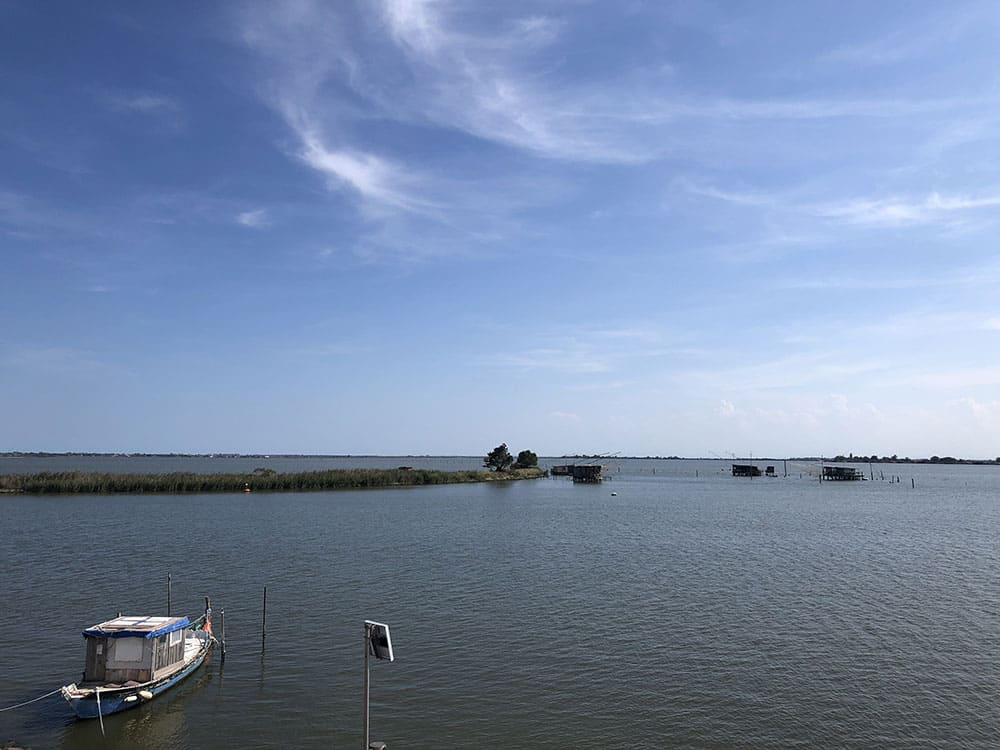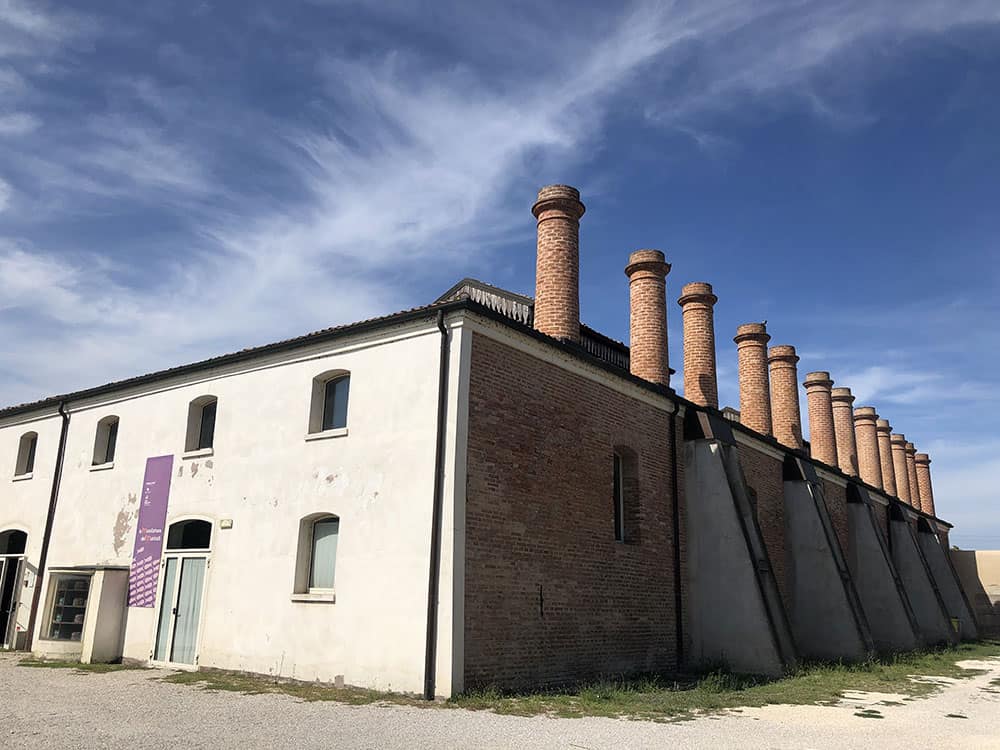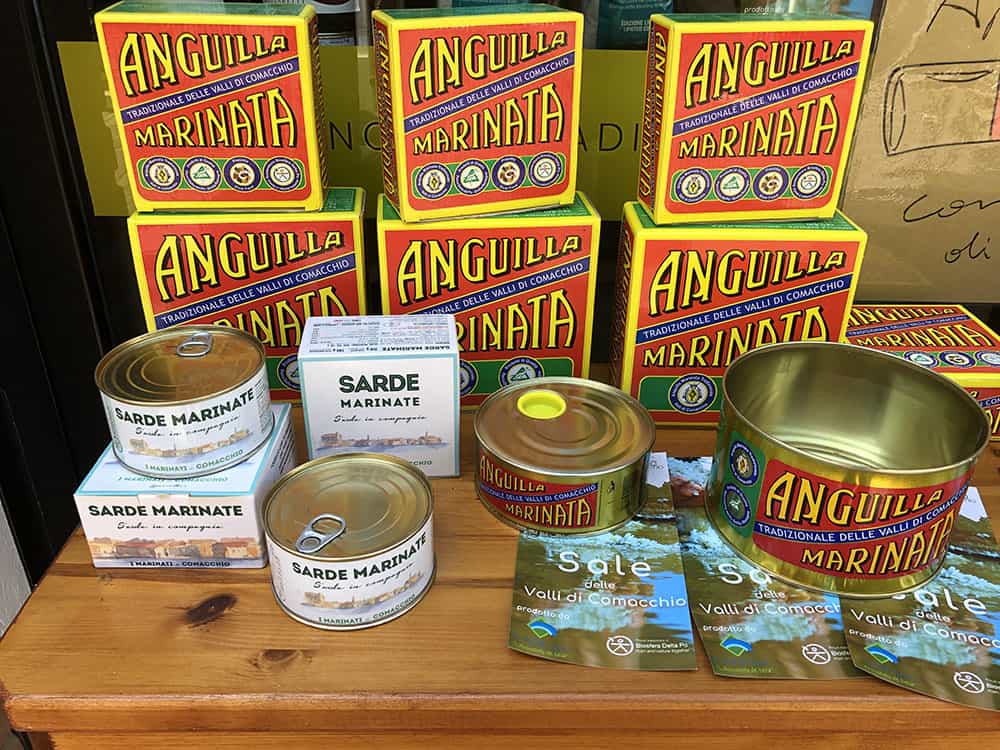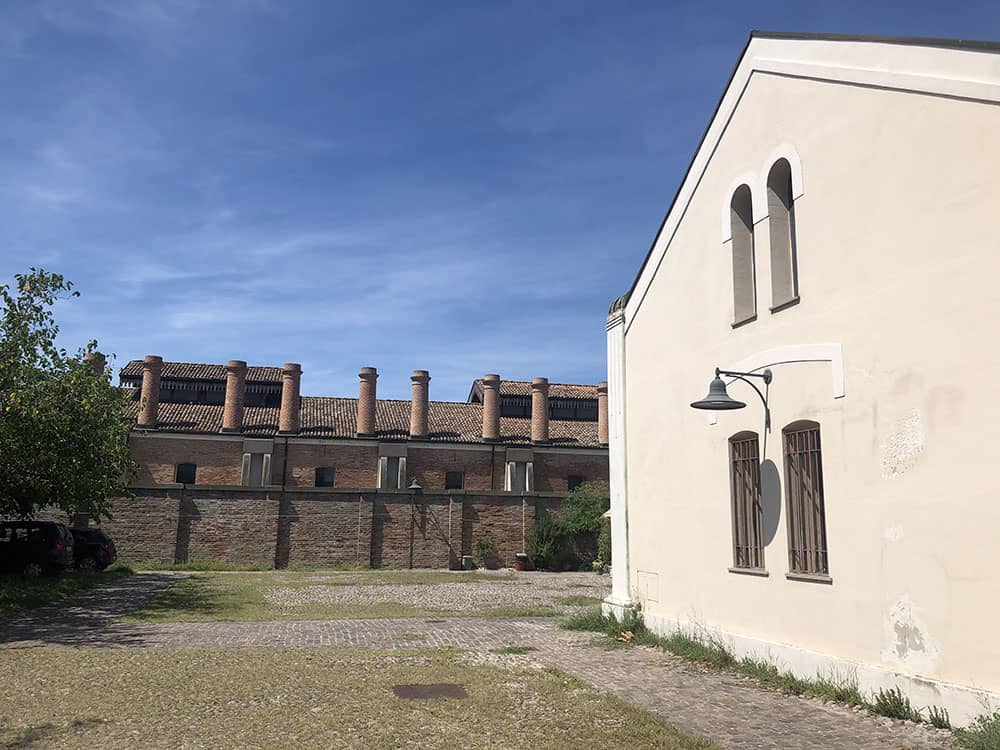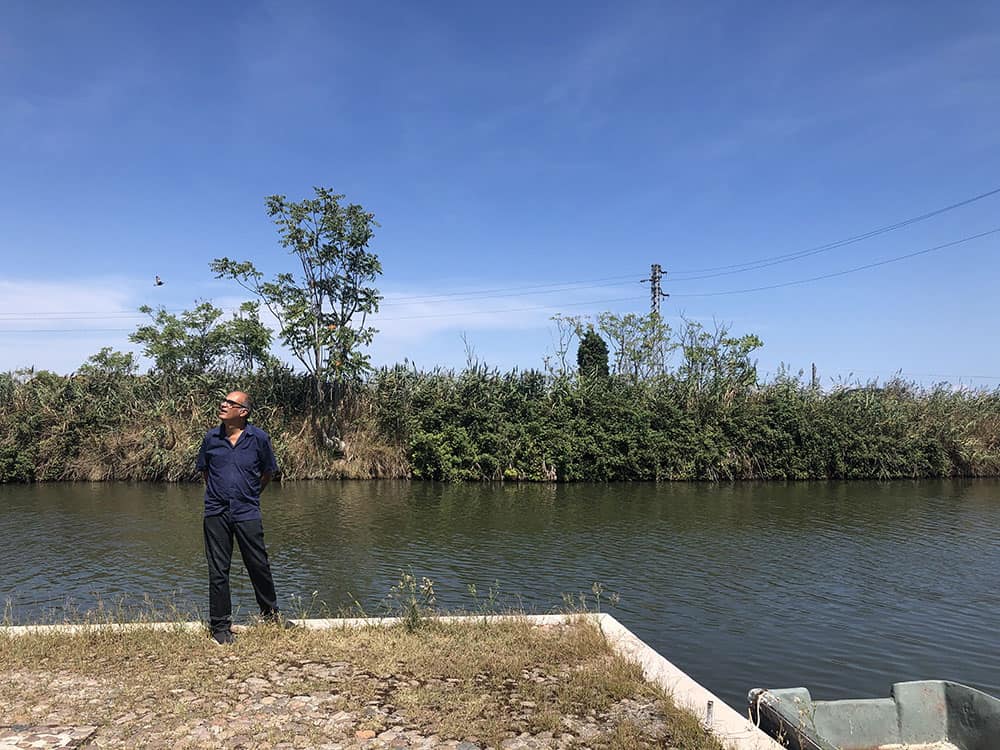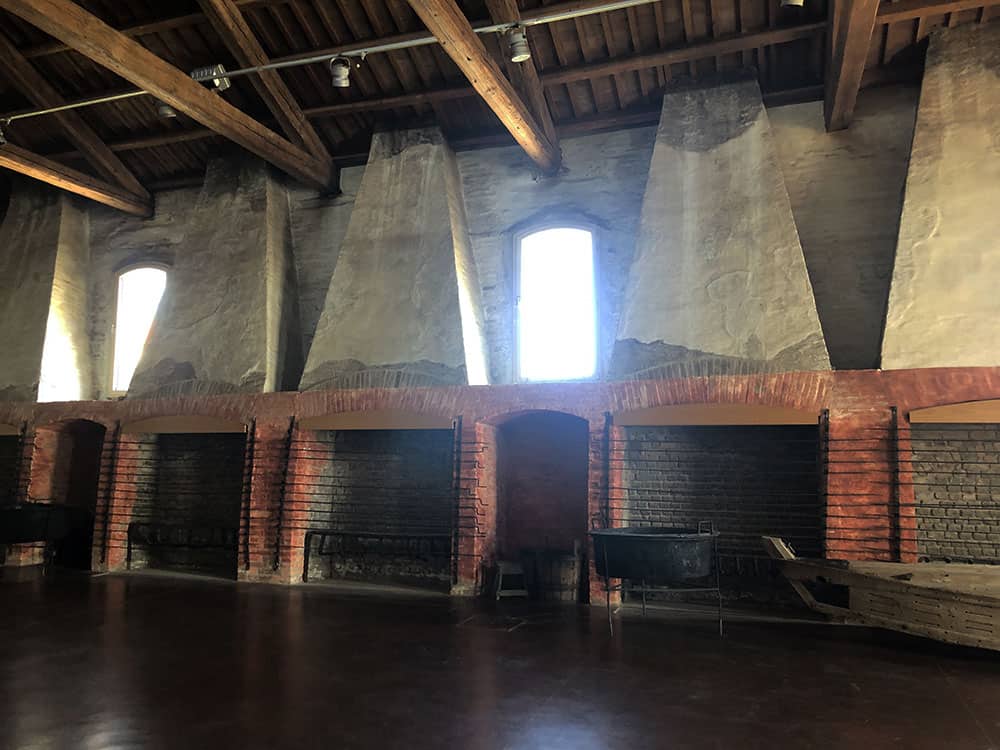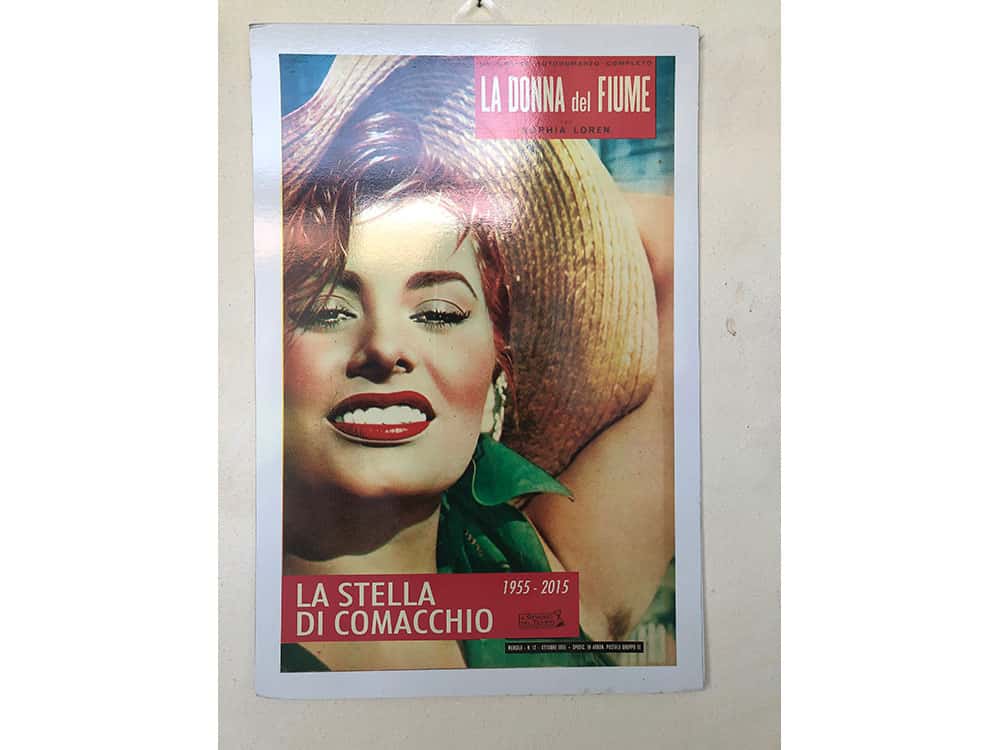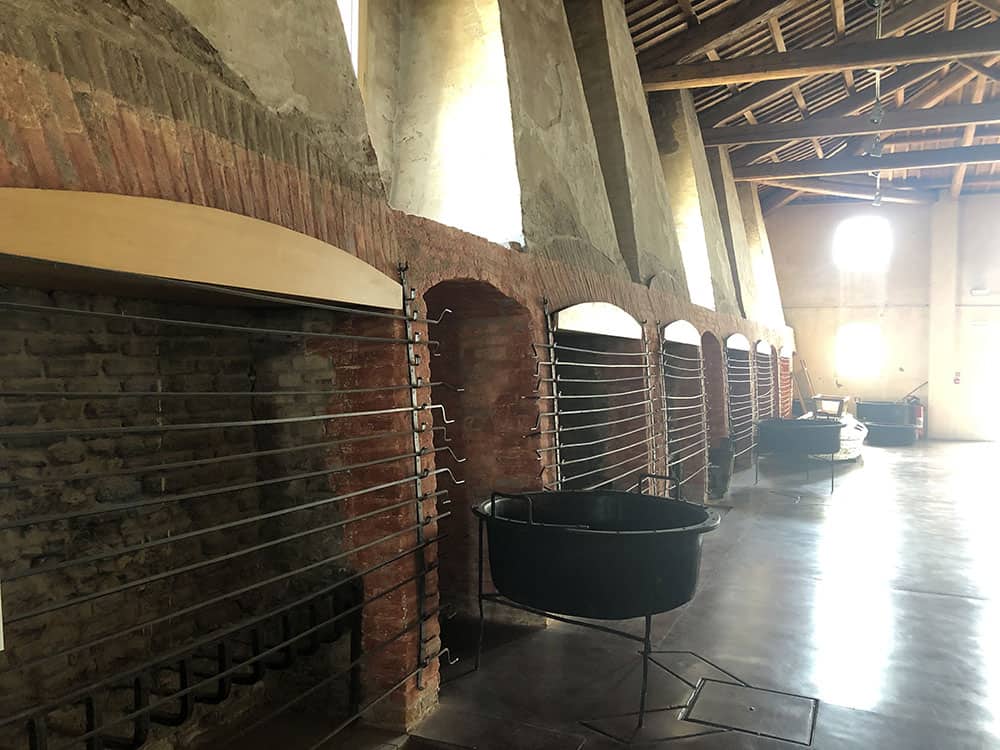Leaving Ferrara we want to take you to the delta of the river Po
As you probably know the river Po is the longest and widest river in Italy that more or
less crosses, from the Alps to the Adriatic sea, most of the northern territory of our
country.
The spectacle of the delta, between Veneto and Emilia Romagna, is a lagoon
landscape, suspended between the water and the sky where countless species of birds
who come to this protected area to live in a harmless surrounding. The Natural park created in 1988 is
protected by Unesco since 1999 and it’s the ideal place for observing the animals within walking distance.
The coastline on the Adriatic was stabilised only 5-6000 years ago and it is from that period
that we can follow the evolutionary process of the Po delta with a good approximation.
The oldest human settlements discovered in the province of Rovigo date back to the
Bronze Age (XVIII-X century BC). A characteristic element of the housing system in
the area is the use of huts (capanne) lying on wooden platforms erected on stilts (trampoli)
The reclamation of the marshes in the surroundings of Comacchio in 1922 allowed the
discovery of the necropolis of Spina, which dates back to around the 6th century BC.
and which testifies to the presence of the Etruscans who had founded a commercial port
located between the fluvial, maritime and terrestrial communication routes (Reno, Po,
and Adriatic).
From the 1930s and above all in the 1940s and 1950s, until the suspension decided by
the Government in 1961, billions of cubic meters of methane and natural gas were also
extracted in the Po Delta area.
From 1951 to 1960, the average subsidence of one meter with peaks of two meters was
measured; despite the suspension of the extractions in 1961, the territory continued to
decline significantly in the following 15 years and today this territory is more than 3
meters below the sea level.
The growing ecological and environmental problems pushed, in the late eighties,
towards a greater awareness of the importance of safeguarding nature.
As we said several different animals found here the perfect place to live and reproduce
but what we really would like to see are pink flamingos
Supposedly there should be 400 of them around the Salina di Comacchio.
On our way to Ravenna (which was our next destination), we decided to take a
short detour towards this wonderful small town in the Delta PO called Comacchio. In my
humble opinion, this is like visiting a little Venice on the Adriatic coast.
Located right on the border of the Regional Park of the Po Delta Comacchio is built on
13 tiny islands in the center of large stretches of water
We start our tour from the famous Treponti (Three Bridges) the old entrance to the city
(fortified bridge for those arriving from the sea)
It consists of 5 staircases built-in arch form.
Loggia dei Mercanti del Grano e Torre dell’Orologio
with its beautiful porch which dates from 1621 and was once the place where was
collected the wheat destined to the poor and at the same tie the location where
merchants gathered for their bargaining.
L’antico ospedale di malati di Comacchio is a precious testimony to the style and
social debate of Neoclassicism. Erected between 1778 and 1784, it was built by the Commune of Comacchio at the will of Pope Clement XIV.
The hospital was conceived as a temple of health, characterized by a highly rational and
innovative system: On the first floor, there were the rooms intended for inmates, divided
into two separate wings, one for men and one for women. The areas for the sick were
large, bright, and well ventilated, according to innovative and modern criteria. Then
there were the rooms used as an infirmary, surgery, delivery room.
Today the restored structure is dedicated to the museum of the ancient delta and of
the area which for centuries has been a hub of trade and civilization, an important junction
between the Adriatic and Mediterranean world and continental Europe. Going down the central staircase we arrive at the piazza where each morning the fish
market takes place. The fish market was built in the XVII century and it still carries the
charm of that period.
If you want you can jump on the typical local boat called BATANE and take a tour of the
city from the canals.
In Piazza XX Settembre we find The Basilica of San Cassiano which is considered
the Duomo of Comacchio, a Baroque church that dates back to 1659, which is for sure
one of the highlights of the city. Beside the cathedral rises the Bell Tower from the same period,
Leaving the Cathedral behind and walking along Via Mazzini, you come across the
suggestive Loggiato dei Cappuccini: a sequence of 142 arches, supported by as many marble columns. Built-in 1647 it was later rebuilt since it was destroyed by an earthquake.
Talking about local food, an interesting location is l’Antica Manifattura dei Marinati, the old factory that still cooks and marinates eels. Inside it is possible to visit the Sala dei
Fuochi with 12 fireplaces for roasting the eels before the marinating process. Further along the Canale Maggiore we come to the 17th century Carmine Church and the Church of the Rosary with a brick façade and portal stone, and it is quite
spectacular because of the reflected light of the brick of both the church and the bell tower.
The church interior has one nave and four side chapels, and some interesting 16th -17th-century paintings such as the ‘Annunciation’ by Jacopo Bambini, the ‘Beheading of Saint John‘ by Carlo Bononi, and the ‘Virgin of the Rosary’ by the local painter Cesare Mezzogori.
Another interesting spot of Comacchio is the fish-market (the Antica Pescheria), with its
open-air fish market trading on benches of stone and marble. (pity that it was closed due to Covid restrictions when we visited)
Commachio is famous for the consumption of Eels in various forms (marinated, fried, and grilled)
For those who appreciate this peculiar fish, there is an annual Eel Sagra which occurs in the first two weeks of October. Hopefully we can go back in the future during this wonderful festivity.
Betti
[socialWarfare]

